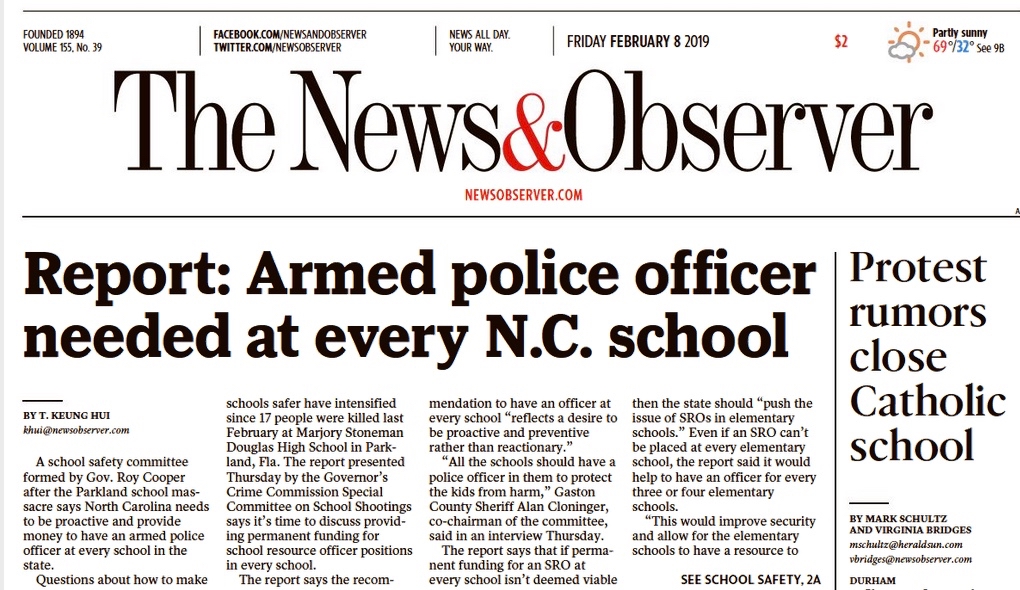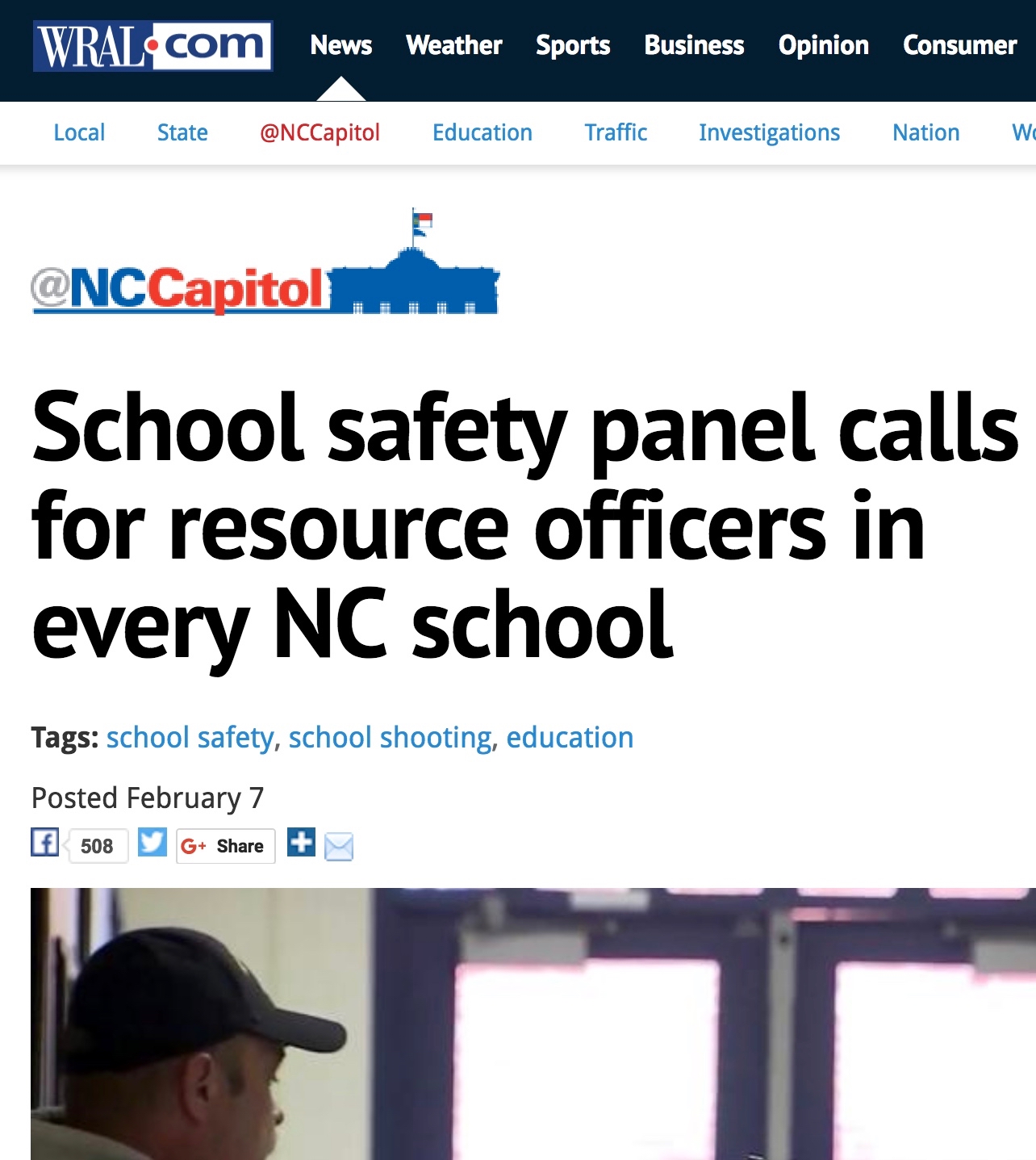 The top page-one headline trumpeted the news: “Report: Armed police officer needed at every N.C. school.”
The top page-one headline trumpeted the news: “Report: Armed police officer needed at every N.C. school.”
And the Raleigh News & Observer wasn’t alone. “School safety panel calls for resource officers in every NC school,” according to WRAL.com.
But what struck two of the state capital’s leading mainstream media outlets as especially newsworthy ended up conspicuously absent from another source. The official Feb. 7 news release about final recommendations from Gov. Roy Cooper’s school safety committee said nothing about adding resource officers to every N.C. public school.
Not once in the 800-word release did Cooper’s press office mention the recommendation that “North Carolina needs to be proactive and provide money to have an armed police officer at every school in the state,” as the N&O reported in its opening paragraph.
 “All the schools should have a police officer in them to protect the kids from harm,” Gaston County Sheriff Alan Cloninger told the newspaper. Cloninger co-chaired Cooper’s committee.
“All the schools should have a police officer in them to protect the kids from harm,” Gaston County Sheriff Alan Cloninger told the newspaper. Cloninger co-chaired Cooper’s committee.
The governor’s release did not convey the sheriff’s sentiment. Nor did Cooper’s press operation mention that “among the recommendations was funding for school resource officers at every school statewide — or at least at every middle school and high school, with three or four elementary schools sharing the services of one officer,” as WRAL reported.
Instead of highlighting that news, a bullet point on the second page of the governor’s release referenced without additional comment a recommendation of “More School Resource Officers (SROs) in schools.”
Why the disparity in emphasis between the news reports and the official account from the governor’s office? The N&O story offers a possible clue.
“The recommendation to increase the number of school resource officers could draw questions from groups who argue that there should be less police and not more in schools,” reporter Keung Hui suggests.
Among the groups actively protesting police in schools: left-of-center political activists who spend much of their time criticizing the Republican-led General Assembly. Hui quotes one of them. “‘Research has not shown that having a school resource officer in every school prevents shootings or makes schools safer,’ said Peggy Nicholson, director of the Youth Justice Project of the Southern Coalition for Social Justice. ‘But research does show it sends more kids into the court system, especially black and brown children.’”
The N&O turns to Nicholson again after citing an October poll that found 84 percent of North Carolinians believe “hiring more school resource officers will be very effective or somewhat effective in stopping school shootings.”
Don’t count the social justice activist among the 84 percent. ““It’s critical that all children feel safe at school, but if you talk with parents and students there are some who don’t feel safe if there’s an officer in school every day,” Nicholson told the Raleigh paper.
While objecting to armed officers in every school, Nicholson mentioned support for the report’s recommendations dealing with officer training and increased funding for mental health services.
Her comments aligned more closely with the priorities emphasized in the opening line of the governor’s news release. “To strengthen school safety and help prevent school shootings, North Carolina schools needs to ramp up training for law enforcement and educators, improve physical security at schools, gather better information about potential threats, and invest in more mental health support for schools.”
It’s worth noting that Cooper’s press team was not alone in downplaying the resource officer recommendation. Carolina Journal’s reporting opened with a focus on mental health programs and “including students in conversations about school safety.”
CJ reported the “recommendation for full funding for an SRO to be assigned to every school in the state.” But that fact appeared in a bullet point more than halfway through the article.
Legislators would need to invest significant taxpayer money to meet the goal of a resource officer in every school. It would require roughly doubling the 1,200 officers patrolling school hallways today.
Some recent academic research questions the benefits. The Brookings Institution highlighted last fall a report that showed no relationship between increased funding for middle school resource officers and a decrease in reported school crimes.
Yet the research findings might be “irrelevant,” according to John Locke Foundation K-12 education expert Terry Stoops. “As long as parents believe that metal detectors, cameras, and school resource officers improve school safety, districts and states will pour money into them.”
Stoops highlights another key point. “As proponents of school resource officers point out, it is nearly impossible to know if the presence of resource officers discouraged or deterred potential acts of school crime and violence (because they are not reported).”
One can expect continuing debate over school safety in North Carolina. If lawmakers pay more attention to their news feeds than Cooper’s press releases, the future of school resource officers will play a leading role in that debate.
Mitch Kokai is senior political analyst for the John Locke Foundation.